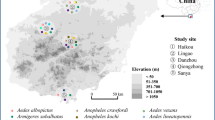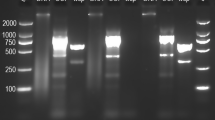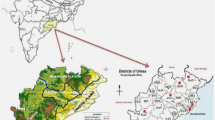Abstract
Mosquito-borne viral diseases are serious health problems in many countries. Various methods have been used for controlling the vectors of these diseases. Among symbiotic bacteria, the members of the genus Wolbachia are the most ubiquitous symbionts of arthropods and play key roles in their host biological characteristics with various effects on their hosts. The identification of these bacteria in Iranian mosquitoes is limited to a few studies. The current study was carried out to determine (1) the Wolbachia infection of probable arbovirus vectors (Aedes caspius, Culex pipiens, Culex theileri and Culiseta longiareolata), (2) the Wolbachia strain(s) infecting the mosquitoes, and (3) the geographical distribution of the Wolbachia strain(s) in the northwest of Iran. Eight species including Ae. caspius, Anopheles hyrcanus, An. maculipennis, Cx. hortensis, Cx. modestus, Cx. pipiens, Cx. theileri, and Cs. longiareolata were identified, amongst which Ae. caspius with 63.1% and An. hyrcanus with 0.3% were the most and the least abundant species, respectively. The results of semi-nested PCR using Wolbachia surface protein (wsp) fragment assays showed that Wolbachia infection was present in three out of the four above mentioned arboviral vector species (Aedes caspius, Culex pipiens, Culex theileri and Culiseta longiareolata), where the highest infection rate was seen in Cx. pipiens. The infection rates of mosquitoes with Wolbachia in the species of Cx. pipiens, Cs. longiareolata, Cx. theileri, and Ae. caspius were 96.9%, 11.5%, 5.2% and 0%, respectively.


Similar content being viewed by others
References
Abai M, Azari-Hamidian S, Ladonni H, Hakimi M, Mashhadi-Esmail K, Sheikhzadeh K, Kousha A, Vatandoost H (2007) Fauna and checklist of mosquitoes (Diptera: Culicidae) of East Azerbaijan Province northwestern Iran. J Arthropod Borne Dis 1(2):27–33
Ahmad NA, Vythilingam I, Lim YA, Zabari NZ, Lee HL (2017) Detection of Wolbachia in Aedes albopictus and their effects on chikungunya virus. Am J Trop Med Hyg 96:148–156
Ahmadnejad F, Otarod V, Fallah M, Lowenski S, Sedighi-Moghaddam R, Zavareh A, Durand B, Lecollinet S, Sabatier P (2011) Spread of West Nile Virus in Iran: a cross-sectional serosurvey in equines 2008–2009. Epidemiol Infect 139:1587–1593
Ahmadnejad F, Otarod V, Fathnia A, Ahmadabadi A, Fallah MH, Zavareh A MN, Durand B, Sabatier P (2016) Impact of climate and environmental factors on West Nile Virus circulation in Iran. J Arthropod Borne Dis 10(3):315–327
Aliota MT, Peinado SA, Velez ID, Osorio JE (2016) The wMel strain of Wolbachia reduces transmission of Zika virus by Aedes aegypti. Sci Rep 6:28792
Amini M, Hanafi-Bojd AA, Asghari S, Chavshin AR (2019) The potential of West Nile Virus transmission regarding the environmental factors using geographic information system (GIS) West Azerbaijan Province Iran. J Arthropod Borne Dis 13(1):27–38
Ant TH, Sinkins SP (2018) A Wolbachia triple-strain infection generates self-incompatibility in Aedes albopictus and transmission instability in Aedes aegypti. Parasit Vectors 11:295
Atyame CM, Dumas LPE, Milesi P, Charlat S, Fort P, Weill M (2014) Wolbachia divergence and the evolution of cytoplasmic incompatibility in Culex pipiens. PLoS One 9:e87336
Azari-Hamidian S, Harbach RE (2009) Keys to the adult females and fourth-instar larvae of the mosquitoes of Iran (Diptera: Culicidae). Zootaxa 2078:1–33
Azari-Hamidian S, Yaghoobi-Ershadi M, Javadian E, Abai M, Mobedi I, Linton YM, Harbach R (2009) Distribution and ecology of mosquitoes in a focus of dirofilariasis in northwestern Iran with the first finding of filarial larvae in naturally infected local mosquitoes. Med Vet Entomol 23:111–121
Bagheri M, Terenius O, Oshaghi MA, Motazakker M, Asgari S, Dabiri F, Vatandoost H, Mohammadi Bavani M, Chavshin AR (2015) West Nile Virus in mosquitoes of Iranian wetlands. Vector Borne Zoonotic Dis 15:750–754
Behbahani A (2012) Wolbachia infection and mitochondrial DNA comparisons among Culex mosquitoes in South West Iran. Pak J Biol Sci 15:54
Blagrove MS, Arias-Goeta C, Failloux AB, Sinkins SP (2012) Wolbachia strain wMel induces cytoplasmic incompatibility and blocks dengue transmission in Aedes albopictus. Proc Natl Acad Sci USA 109:255–260
Bleidorn C, Gerth M (2018) A critical re-evaluation of multilocus sequence typing (MLST) efforts in Wolbachia. FEMS Microbiol Ecol. https://doi.org/10.1093/femsec/fix163
Bouchon D, Rigaud T, Juchault P (1998) Evidence for widespread Wolbachia infection in isopod crustaceans: molecular identification and host feminization. Proc R Soc Lond B Biol Sci 265:1081–1090
Bull JJ, Turelli M (2013) Wolbachia versus dengue: evolutionary forecasts. Evol Med Public Health 2013:197–207
Calvitti M, Moretti R, Skidmore AR, Dobson SL (2012) Wolbachia strain wPip yields a pattern of cytoplasmic incompatibility enhancing a Wolbachia-based suppression strategy against the disease vector Aedes albopictus. Parasit Vectors 5:254
Calvitti M, Marini F, Desiderio A, Puggioli A, Moretti R (2015) Wolbachia density and cytoplasmic incompatibility in Aedes albopictus: concerns with using artificial Wolbachia infection as a vector suppression tool. PLoS One 10:e0121813
Chavshin AR, Dabiri F, Vatandoost H, Bavani MM (2015) Susceptibility of Anopheles maculipennis to different classes of insecticides in West Azarbaijan Province, Northwestern Iran. Asian Pac J Trop Biomed 5(5):403–406
Chinikar S, Javadi A, Ataei B, Shakeri H, Moradi M, Mostafavi E, Ghiasi SM (2012) Detection of West Nile Virus genome and specific antibodies in Iranian encephalitis patients. Epidemiol Infect 140:1525–1529
Chinikar S, Shah-Hosseini N, Mostafavi E, Moradi M, Khakifirouz S, Jalali T, Goya MM, Shirzadi MR, Zainali M, Fooks AR (2013) Seroprevalence of West Nile Virus in Iran. Vector Borne Zoonotic Dis 13:586–589
de Pinho Mixao V, Mendes A, Mauricio I, Calado M, Novo M, Belo S, Almeida A (2016) Molecular detection of Wolbachia pipientis in natural populations of mosquito vectors of Dirofilaria immitis from continental Portugal: first detection in Culex theileri. Med Vet Entomol 30:301–309
Dobson SL, Rattanadechakul W, Marsland EJ (2004) Fitness advantage and cytoplasmic incompatibility in Wolbachia single- and superinfected Aedes albopictus. Heredity 93:135–142
Dodson BL, Hughes GL, Paul O, Matacchiero AC, Kramer LD, Rasgon JL (2014) Wolbachia enhances West Nile Virus (WNV) infection in the mosquito Culex tarsalis. PLoS Negl Trop Dis. 8:e2965
Dodson BL, Andrews ES, Turell MJ, Rasgon JL (2017) Wolbachia effects on Rift Valley fever virus infection in Culex tarsalis mosquitoes. PLoS Negl Trop Dis 11:e0006050
Douglas AE (2007) Symbiotic microorganisms: untapped resources for insect pest control. Trends Biotechnol 25:338–342
Dyab AK, Galal LA, Mahmoud AE, Mokhtar Y (2016) Finding Wolbachia in Filarial larvae and Culicidae mosquitoes in Upper Egypt governorate. Korean J Parasitol 54:265
Felsenstein J (1985) Confidence limits on phylogenies: an approach using the bootstrap. Evolution 39(4):783–791
Fereidouni SR, Ziegler U, Linke S, Niedrig M, Modirrousta H, Hoffmann B, Groschup MH (2011) West Nile Virus monitoring in migrating and resident water birds in Iran: are common coots the main reservoirs of the virus in wetlands? Vector Borne Zoonotic Dis 11:1377–1381
Frentiu FD, Robinson J, Young PR, McGraw EA, O’Neill SL (2010) Wolbachia-mediated resistance to dengue virus infection and death at the cellular level. PLoS One 5:e13398
Glaser RL, Meola MA (2010) The native Wolbachia endosymbionts of Drosophila melanogaster and Culex quinquefasciatus increase host resistance to West Nile virus infection. PLoS One 5:e11977
Hertig M, Wolbach SB (1924) Studies on rickettsia-like micro-organisms in insects. J of Med Res 44:329–374
Hughes GL, Rasgon JL (2014) Transinfection: a method to investigate Wolbachia–host interactions and control arthropod-borne disease. Insect Mol Biol 23:141–151
Hurst G, Jiggins FM (2000) Male-killing bacteria in insects: mechanisms incidence and implications. Emerg Infect Dis 6:329
Iturbe-Ormaetxe I, Walker T (2011) Wolbachia and the biological control of mosquito-borne disease. EMBO Rep 12:508–518
Kageyama D, Nishimura G, Hoshizaki S, Ishikawa Y (2002) Feminizing Wolbachia in an insect Ostrinia furnacalis (Lepidoptera: Crambidae). Heredity 88:444–449
Karami M, Moosa-Kazemi SH, Oshaghi MA, Vatandoost H, Sedaghat MM, Rajabnia R, Hosseini M, Maleki-Ravasan N, Yahyapour Y, Ferdosi-Shahandashti E (2016) Wolbachia endobacteria in natural populations of Culex pipiens of Iran and its phylogenetic congruence. J Arthropod Borne Dis 10(3):347–363
Karimi J, Darsouei R (2014) Presence of the endosymbiont Wolbachia among some fruit flies (Diptera: Tephritidae) from Iran: a multilocus sequence typing approach. J Asia Pac Entomol 17:105–112
Karimi J, Darsouei R, Hosseini M, Stouthamer R (2012) Molecular characterization of Iranian Trichogrammatids (Hymenoptera: Trichogrammatidae) and their Wolbachia endosymbiont. J Asia Pac Entomol 15:73–77
Karimian F, Vatandoost H, Rassi Y, Maleki-Ravasan N, Choubdar N, Koosha M, Arzamani K, Moradi-Asl E, Veysi A, Alipour H (2018) wsp-based analysis of Wolbachia strains associated with Phlebotomus papatasi and P sergenti (Diptera: Psychodidae) main cutaneous leishmaniasis vectors introduction of a new subgroup wSerg. Pathog Glob Health 112:152–160
Khoshdel-Nezamiha F, Vatandoost H, Azari-Hamidian S, Bavani MM, Dabiri F, Entezar-Mahdi R, Chavshin AR (2014) Fauna and larval habitats of mosquitoes (Diptera: Culicidae) of West Azerbaijan Province northwestern Iran. J Arthropod Borne Dis 8:163–173
Khoshdel-Nezamiha F, Vatandoost H, Oshaghi MA, Azari-Hamidian S, Mianroodi RA, Dabiri F, Bagheri M, Terenius O, Chavshin AR (2016) Molecular characterization of mosquitoes (Diptera: Culicidae) in Northwestern Iran by using rDNA-ITS2. Jpn J Infect Dis 69:319–322
Kozek WJ, Rao RU (2007) The discovery of Wolbachia in arthropods and nematodes—A historical perspective Wolbachia: a bug’s life in another bug. Karger Publishers, Basel, pp 1–14
Kumar S, Stecher G, Tamura K (2016) MEGA7: molecular evolutionary genetics analysis version 70 for bigger datasets. Mol Biol Evol 33:1870–1874
Medlock JM, Hansford KM, Schaffner F, Versteirt V, Hendrickx G, Zeller H, Bortel WV (2012) A review of the invasive mosquitoes in Europe: ecology public health risks and control options. Vector Borne Zoonotic Dis 12:435–447
Meshkat Z, Chinikar S, Shakeri M, Manavifar L, Moradi M, Mirshahabi H, Jalali T, Khakifirouz S, Shahhosseini N (2015) Prevalence of West Nile virus in Mashhad Iran: a population-based study. Asian Pac J Trop Med 8:203–205
Naficy K, Saidi S (1970) Serological survey on viral antibodies in Iran. Trop Geogr Med 22:183–188
Naseri-Karimi N, Vatandoost H, Bagheri M, Chavshin AR (2015) Susceptibility status of Culex pipiens against deltamethrin and DDT, Urmia County, West Azerbaijan Province, northwestern Iran. Asian Pac J Trop Dis 5(S1):S77–S79
Pan X, Zhou G, Wu J, Bian G, Lu P, Raikhel AS, Xi Z (2012) Wolbachia induces reactive oxygen species (ROS)-dependent activation of the Toll pathway to control dengue virus in the mosquito Aedes aegypti. Proc Natl Acad Sci USA 109:e23–e31
Pannebakker BA, Pijnacker LP, Zwaan BJ, Beukeboom LW (2004) Cytology of Wolbachia-induced parthenogenesis in Leptopilina clavipes (Hymenoptera: Figitidae). Genome 47:299–303
Parvizi P, Bordbar A, Najafzadeh N (2013a) Detection of Wolbachia pipientis including a new strain containing the wsp gene in two sister species of Paraphlebotomus sandflies potential vectors of zoonotic cutaneous leishmaniasis. Mem Inst Oswaldo Cruz 108:414–420
Parvizi P, Fardid F, Soleimani S (2013b) Detection of a new strain of Wolbachia pipientis in Phlebotomus perfiliewi transcaucasicus a potential vector of visceral leishmaniasis in North West of Iran by targeting the major surface protein gene. J Arthropod Borne Dis 7(1):46–55
Pourali P, Roayaei Ardakani M, Jolodar A, Razi Jalali M (2009) PCR screening of the Wolbachia in some arthropods and nematodes in Khuzestan province. Iran J Vet Res 10:216–222
Rao RU (2005) Endosymbiotic Wolbachia of parasitic filarial nematodes as drug targets. Indian J Med Res 122:199–204
Ravikumar H, Ramachandraswamy N, Puttaraju H (2011) Molecular strain typing of Wolbachia infection from Indian mosquitoes using wsp gene. Asian Pac J Trop Dis 1:106–109
Ross PA, Wiwatanaratanabutr I, Axford JK, White VL, Endersby-Harshman NM, Hoffmann AA (2017) Wolbachia infections in Aedes aegypti differ markedly in their response to cyclical heat stress. PLoS Pathog 13:e1006006
Sabesan S, Jambulingam P (2012) What ails Wolbachia transinfection to control disease vectors? Trends Parasitol 28:1–2
Saidi S, Tesh R, Javadian E, Nadim A (1976) The prevalence of human infection with West Nile Virus in Iran. Iran J Pub Health 5:8–13
Saitou N, Nei M (1987) The neighbor-joining method: a new method for reconstructing phylogenetic trees. Mol Biol Evol 4:406–425
Schnettler E, Sreenu VB, Mottram T, McFarlane M (2016) Wolbachia restricts insect-specific flavivirus infection in Aedes aegypti cells. J Gen Virol 97:3024–3029
Schultz MJ, Isern S, Michael SF, Corley RB, Frydman CJHHM (2017) Variable inhibition of Zika Virus replication by different Wolbachia strains in mosquito cell cultures. J Virol 91:e00339–e00417
Schultz MJ, Connor JH, Frydman HM (2018a) Group B Wolbachia strain-dependent inhibition of arboviruses DNA. Cell Biol 37:2–6
Schultz MJ, Tan AL, Gray CN, Isern S, Michael SF, Frydman HM, Connor JH (2018b) Wolbachia wStri Blocks Zika Virus growth at two independent stages of viral replication. mBio 9(3):e00738–e00818
Shahhosseini N, Chinikar S, Moosa-Kazemi SH, Sedaghat MM, Kayedi MH, Lühken R, Schmidt-Chanasit J (2017) West Nile Virus lineage-2 in culex specimens from Iran. Trop Med Int Health 22:1343–1349
Shah-Hosseini N, Chinikar S, Ataei B, Fooks AR, Groschup MH (2014) Phylogenetic analysis of West Nile Virus genome Iran. Emerg Infect Dis 20(8):1419–1421
Sharifi Z, Mahmoudian SM, Talebian A (2010) A study of West Nile Virus infection in Iranian blood donors. Arch Iran Med 13:1–4
Silva JBL, Magalhaes Alves D, Bottino-Rojas V, Pereira TN, Sorgine MHF, Caragata EP, Moreira LA (2017) Wolbachia and dengue virus infection in the mosquito Aedes fluviatilis (Diptera: Culicidae). PLoS One 12:e0181678
Silver JB (2007) Mosquito ecology: field sampling methods. Springer, Berlin, p 1477
Sinkins SP (2004) Wolbachia and cytoplasmic incompatibility in mosquitoes. Insect Biochem Mol Biol 34:723–729
Sinkins SP (2013) Wolbachia and arbovirus inhibition in mosquitoes. Future Microbiol 8:1249–1256
Tamura K, Nei M, Kumar S (2004) Prospects for inferring very large phylogenies by using the neighbor-joining method. Proc Natl Acad Sci USA 101:11030–11035
Telschow A, Grziwotz F, Crain P, Miki T, Mains JW, Sugihara G, Dobson SL, Hsieh CH (2017) Infections of Wolbachia may destabilize mosquito population dynamics. J Theor Biol 428:98–105
Tortosa P, Charlat S, Labbe P, Dehecq JS, Barre H, Weill M (2010) Wolbachia age-sex-specific density in Aedes albopictus: a host evolutionary response to cytoplasmic incompatibility? PLoS One 5:e9700
Ulrich JN, Beier JC, Devine GJ, Hugo LE (2016) Heat sensitivity of wMel Wolbachia during Aedes aegypti development. PLoS Negl Trop Dis 10:e0004873
Van Opijnen T, Breeuwer J (1999) High temperatures eliminate Wolbachia a cytoplasmic incompatibility inducing endosymbiont from the two-spotted spider mite. Exp Appl Acarol 23:871–881
Weaver SC, Reisen WK (2010) Present and future arboviral threats. Antivir Res 85:328–345
Weeks A, Breeuwer J (2001) Wolbachia–induced parthenogenesis in a genus of phytophagous mites. Proceedings of the Royal Society of London B: Biol Sci 268 2245–2251
Werren JH, Baldo L, Clark ME (2008) Wolbachia: master manipulators of invertebrate biology. Nat Rev Microbiol 6:741–751
Zheng X, Zhang D, Li Y, Yang C, Wu Y, Liang X, Liang Y, Pan X, Hu L, Sun Q, Wang X, Wei Y, Zhu J, Qian W, Yan Z, Parker AG, Gilles JRL, Bourtzis K, Bouyer J, Tang M, Zheng B, Yu J, Liu J, Zhuang J, Hu Z, Zhang M, Gong JT, Hong XY, Zhang Z, Lin L, Liu Q, Hu Z, Wu Z, Baton LA, Hoffmann AA, Xi Z (2019) Incompatible and sterile insect techniques combined eliminate mosquitoes. Nature 572:56–61
Zhou W, Rousset F, O’Neill S (1998) Phylogeny and PCR-based classification of Wolbachia strains using wsp gene sequences. Proc R Soc Lond B Biol Sci 265:509–515
Acknowledgements
This article is part of the results of the first author’s dissertation for the fulfillment of MSc degree in Medical Entomology and Vector Control from the Department of Medical Entomology and Vector Control, School of Public Health, Urmia University of Medical Sciences, Urmia, Iran. This study was supported by the Urmia University of Medical Sciences (UMSU), Urmia, Iran.
Author information
Authors and Affiliations
Corresponding author
Ethics declarations
Conflict of interest
The authors declare that there is no conflict of interest.
Additional information
Publisher's Note
Springer Nature remains neutral with regard to jurisdictional claims in published maps and institutional affiliations.
Rights and permissions
About this article
Cite this article
Bozorg-Omid, F., Oshaghi, M.A., Vahedi, M. et al. Wolbachia infection in West Nile Virus vectors of northwest Iran. Appl Entomol Zool 55, 105–113 (2020). https://doi.org/10.1007/s13355-019-00658-6
Received:
Accepted:
Published:
Issue Date:
DOI: https://doi.org/10.1007/s13355-019-00658-6




